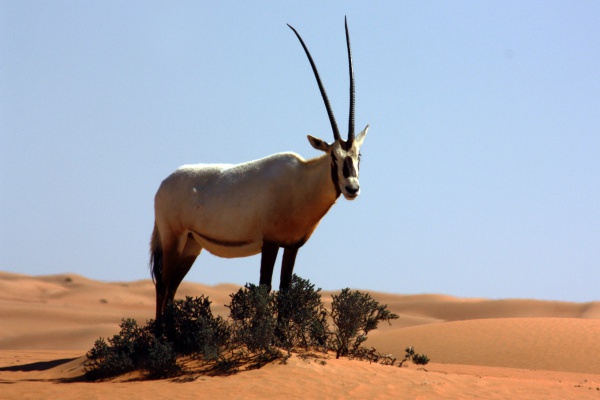Facts About Arabian oryx
The Arabian oryx, also known as the white oryx, is a striking antelope native to the Arabian Peninsula. This medium-sized animal boasts long, straight horns, a distinctive shoulder bump, and a tufted tail. Its coat is predominantly white, contrasted with brown undersides and legs, and it features black markings on its head and neck. Adapted to desert and steppe environments, the Arabian oryx has an extraordinary ability to detect rainfall and migrate towards it, demonstrating its remarkable resilience in harsh conditions.
Unfortunately, by the early 1970s, the Arabian oryx had become extinct in the wild due to excessive hunting and habitat loss. However, thanks to dedicated conservation efforts, including captive breeding programs and reintroduction initiatives, the species was brought back from the brink. In 1986, it was classified as endangered, and by 2011, it had been reclassified as vulnerable, showcasing a remarkable conservation success story.
Historically, these majestic creatures roamed across the Middle East. Today, thanks to reintroduction programs, they can once again be found in countries like Oman, Saudi Arabia, and the United Arab Emirates. The Arabian oryx's diet mainly consists of grasses, though it also consumes various types of vegetation. Remarkably, it can survive for extended periods without water, a testament to its desert adaptations.
Despite these successes, the Arabian oryx still faces threats. Predators such as wolves pose a natural danger, while human activities like habitat destruction and hunting continue to be significant risks. Nonetheless, the Arabian oryx holds a special place in regional culture and is the national animal of several countries in the area.
Organizations such as the Phoenix Zoo and the Al Ain Zoo have played crucial roles in the conservation of the Arabian oryx. Their initiatives have not only helped in recovering the population but also in reintroducing the species into its natural habitat. These efforts highlight the effectiveness of well-coordinated conservation strategies and serve as a beacon of hope for other endangered species worldwide.

 Jordan
Jordan